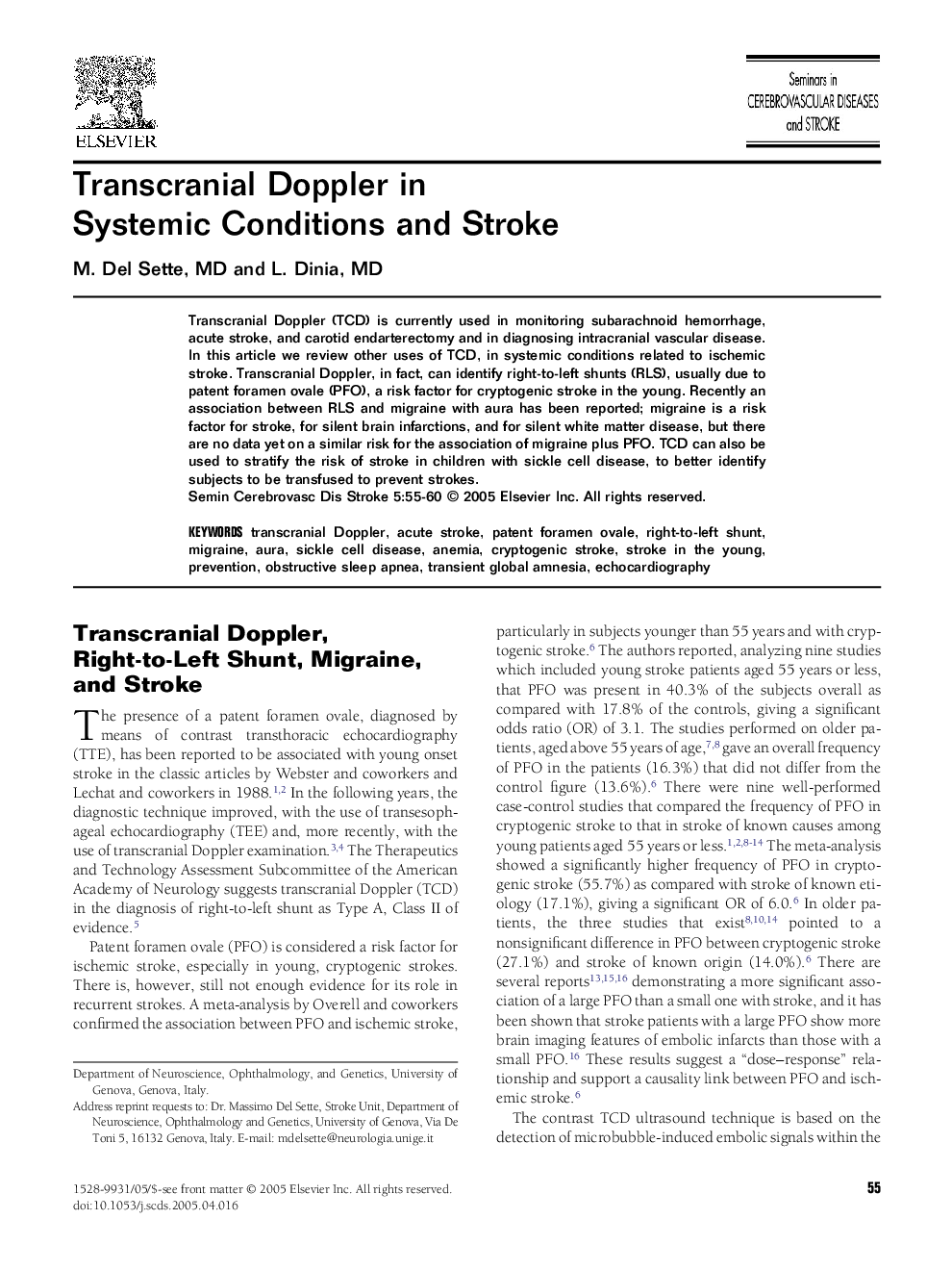| Article ID | Journal | Published Year | Pages | File Type |
|---|---|---|---|---|
| 9305848 | Seminars in Cerebrovascular Diseases and Stroke | 2005 | 6 Pages |
Abstract
Transcranial Doppler (TCD) is currently used in monitoring subarachnoid hemorrhage, acute stroke, and carotid endarterectomy and in diagnosing intracranial vascular disease. In this article we review other uses of TCD, in systemic conditions related to ischemic stroke. Transcranial Doppler, in fact, can identify right-to-left shunts (RLS), usually due to patent foramen ovale (PFO), a risk factor for cryptogenic stroke in the young. Recently an association between RLS and migraine with aura has been reported; migraine is a risk factor for stroke, for silent brain infarctions, and for silent white matter disease, but there are no data yet on a similar risk for the association of migraine plus PFO. TCD can also be used to stratify the risk of stroke in children with sickle cell disease, to better identify subjects to be transfused to prevent strokes.
Keywords
Related Topics
Health Sciences
Medicine and Dentistry
Medicine and Dentistry (General)
Authors
M. MD, L. MD,
